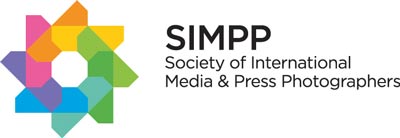articles/Media/proofbeyondreasonabledoubt-page5
Proof Beyond Reasonable Doubt - proofing - part 5 of 1 2 3 4 5 6 7 8 9 10 11
by Mike McNamee Published 01/10/2008
Fine Art Proofing
It is arguable whether this topic should be included here. However, for completeness, in the world of fine art and limited edition printing they have their own terms and meanings for proofs. A printer's proof is retained by the printing service provider, for reference when additional limited edition prints are called up, the so-called 'print on demand'. The printer's proofs may also include the prints made while the image is being adjusted to the satisfaction of the artist. The final proof (ie the one which is accepted as the final version) is called a BAT from the French bon a tirer or 'good to pull or print'. This proof can be an inkjet print, a giclee, Iris or silk screen. An artist's proof is one of a small number retained by the artist, which are not included in the count of the limited edition.
Artists' proofs are not normally sold but should the artist become very famous the cache of having something which is different can inflate the value of the proof - a bit like the pencil sketches of the revered and the famous really!
Printers such as the Epson 3800, 4880, 7880 and 9880 will proof and create fine art output.
Online Proofing
All of the types of proofing discussed above should not be confused with the other services that have appeared in the last five years, typified by the expression, 'online proofing'. Instead of the photographer slugging out a proof album to very quickly present to their client, ahead of the main album, online proofing usually provides a web-based service for showing the 'proofs' on the web so that all the guests (and not just the bride and groom) can have access to the pictures. This also enhances additional print sales (claims of as much as £300 per wedding have been bandied about).
Mike McNamee revisits the topic after a five year gap - Cross Rendering for CMYK proofing
It is quite common for a pre-press provider or printer to ask for an RGB image so that they can control the conversion to CMYK to their common standard. In these circumstances it is still imperative that a hard copy goes with the job so that everyone knows what they are looking at. One way is to cross render the image into a proof which takes the RGB data, converts it to a CMYK simulation and then uses the inkjet's RGB-based profile to ensure the accuracy of delivery of the CMYK mimic. Photoshop may be set up to do that (see the call-out boxes) and even mimics the off-white base tone of the standardised print stock.
When you soft proof using the cross render do not leave white margins on screen or on the paper proof. If you do, it will look a dull beast in comparison to its RGB cousin - that is a fact of life, we are making a simulation of the eventual output which is never going to be as bright as an illuminated inkjet!
Please Note:
There is more than one page for this Article.
You are currently on page 5
- Proof Beyond Reasonable Doubt - proofing page 1
- Proof Beyond Reasonable Doubt - proofing page 2
- Proof Beyond Reasonable Doubt - proofing page 3
- Proof Beyond Reasonable Doubt - proofing page 4
- Proof Beyond Reasonable Doubt - proofing page 5
- Proof Beyond Reasonable Doubt - proofing page 6
- Proof Beyond Reasonable Doubt - proofing page 7
- Proof Beyond Reasonable Doubt - proofing page 8
- Proof Beyond Reasonable Doubt - proofing - proofing page 9
- Proof Beyond Reasonable Doubt - proofing page 10
- Proof Beyond Reasonable Doubt - proofing page 11
1st Published 01/10/2008
last update 11/11/2019 11:46:30
More Media Articles
There are 20 days to get ready for The Society of Photographers Convention and Trade Show at The Novotel London West, Hammersmith ...
which starts on Wednesday 14th January 2026








